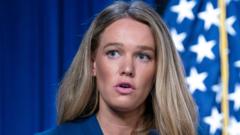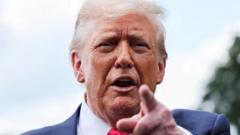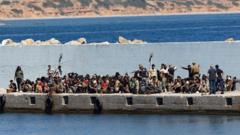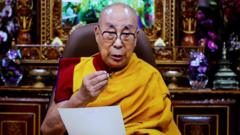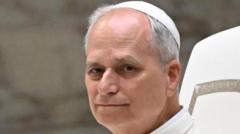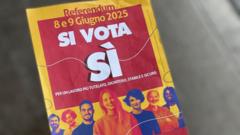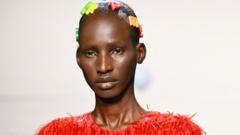The Vatican's upcoming conclave will witness a historic intersection of continuity and change as cardinals balance Pope Francis's progressive vision with distinct regional realities.
**Conclave Dynamics: Navigating Diversity and Continuity in Vatican Elections**
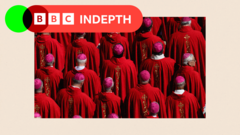
**Conclave Dynamics: Navigating Diversity and Continuity in Vatican Elections**
As cardinals prepare for the conclave, Pope Francis’s legacy and the diverse needs of global Catholicism shape the election landscape.
In just a few weeks, the Vatican’s Santa Marta guesthouse will welcome 133 cardinals for a conclave set to elect the next Pope. One room, sealed with a red ribbon since Easter Monday, remains a poignant reminder of Pope Francis, whose twelve-year tenure has drastically reshaped the Catholic Church's landscape. With around 80% of the voting cardinals appointed by Francis, his influence towers over the discussions that will determine the Church's future.
As cardinals engage in pre-conclave meetings known as general congregations, a significant theme has emerged: the diverse realities of the global Church. For the first time, regions like South Sudan, Cape Verde, and Tonga will have representation, reflecting a commitment to inclusivity fostered by Pope Francis himself. While some cardinals acknowledge a unified path forward, others raise concerns about the Pope's legacy and the need for reforms that address varying local challenges.
The potential successor will inherit titles that extend beyond spiritual leadership; they must serve as a statesman representing the global Catholic community. As the world’s smallest state, the Vatican holds substantial global influence, highlighted by the 50 million followers of Pope Francis on social media. His focus on humanitarian issues, including poverty and conflict resolution, has positioned the papal role as one that transcends religious boundaries.
Contrastingly, with a divided opinion on Pope Francis's reforms, some cardinals voice skepticism. Many are eager for clarity around issues of governance, youth engagement, and LGBTQ+ inclusion, areas where Pope Francis’s intentions often seemed muddled. The historical emphasis on maintaining tradition has sparked debate among church leaders regarding the future direction of the Church.
While some traditionalists express concern over the progressive shifts initiated by Francis, his funeral resonated with themes of justice, compassion for migrants, and environmental stewardship—messages that captivated both supporters and skeptics. Cardinal Vincent Nichols emphasized the universal concern surrounding the upcoming vote, indicating that the new Pope should be a beacon for all hardships faced today.
Looking ahead, the conclave will ultimately serve as a reflection of both continuity with Francis's mission and the necessity to bridge the gap between opposing views within the Church. As the cardinals enter the Sistine Chapel, their decisions will be guided by prayerful reflection, but also the pressing needs articulated by Catholic congregations worldwide. Whether the next Pope can unify disparate voices and extend the legacy of Pope Francis remains one of the most pivotal questions facing the Church today.
As cardinals engage in pre-conclave meetings known as general congregations, a significant theme has emerged: the diverse realities of the global Church. For the first time, regions like South Sudan, Cape Verde, and Tonga will have representation, reflecting a commitment to inclusivity fostered by Pope Francis himself. While some cardinals acknowledge a unified path forward, others raise concerns about the Pope's legacy and the need for reforms that address varying local challenges.
The potential successor will inherit titles that extend beyond spiritual leadership; they must serve as a statesman representing the global Catholic community. As the world’s smallest state, the Vatican holds substantial global influence, highlighted by the 50 million followers of Pope Francis on social media. His focus on humanitarian issues, including poverty and conflict resolution, has positioned the papal role as one that transcends religious boundaries.
Contrastingly, with a divided opinion on Pope Francis's reforms, some cardinals voice skepticism. Many are eager for clarity around issues of governance, youth engagement, and LGBTQ+ inclusion, areas where Pope Francis’s intentions often seemed muddled. The historical emphasis on maintaining tradition has sparked debate among church leaders regarding the future direction of the Church.
While some traditionalists express concern over the progressive shifts initiated by Francis, his funeral resonated with themes of justice, compassion for migrants, and environmental stewardship—messages that captivated both supporters and skeptics. Cardinal Vincent Nichols emphasized the universal concern surrounding the upcoming vote, indicating that the new Pope should be a beacon for all hardships faced today.
Looking ahead, the conclave will ultimately serve as a reflection of both continuity with Francis's mission and the necessity to bridge the gap between opposing views within the Church. As the cardinals enter the Sistine Chapel, their decisions will be guided by prayerful reflection, but also the pressing needs articulated by Catholic congregations worldwide. Whether the next Pope can unify disparate voices and extend the legacy of Pope Francis remains one of the most pivotal questions facing the Church today.





